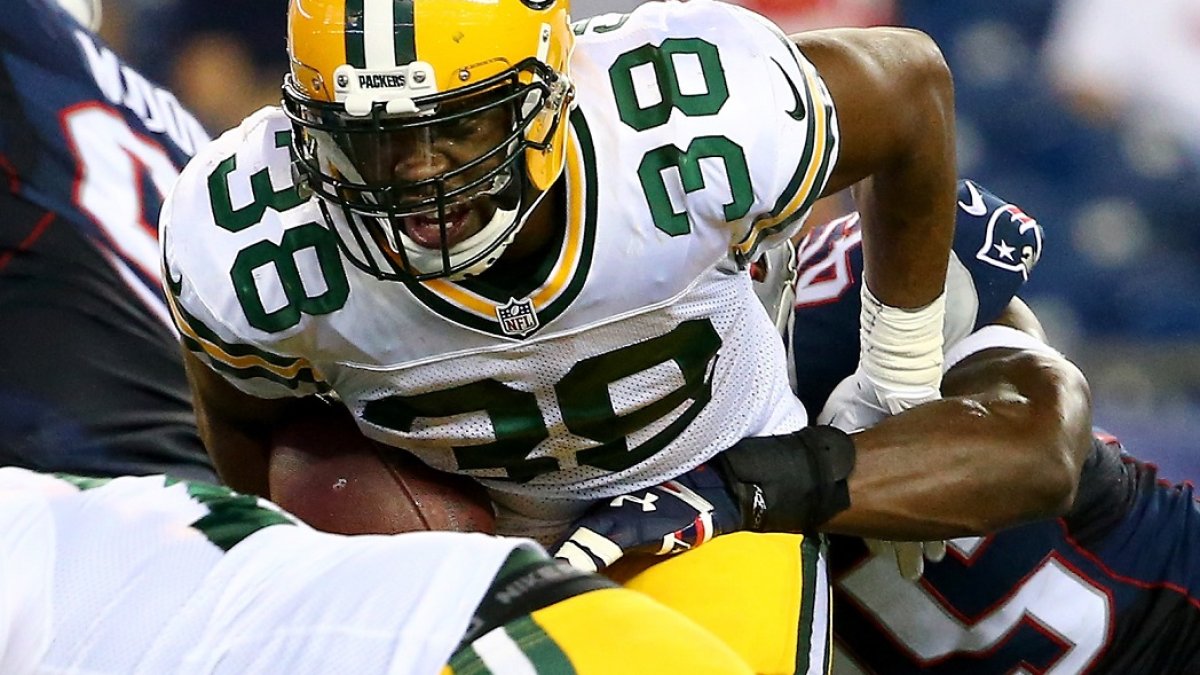While the official beginning to the regular season is just around the corner, it would be a significant mistake for the DFS populace to overlook the boundless potential of preseason action. We live in the age of information but, unlike during the regular season, much of the most important news impacting our lineups is not reported by the overabundant in-season televised programs, scheduled chats or weekly columns. Many of the strategies we hold as gospel during regular season action must be replaced by those that have been established to be just as reliable for the preseason. Success will find those who are prepared and take the right steps.
1. Search all reliable outlets for the latest news.
It’s unlikely to come as a surprise, but breaking information on the injured, healthy inactives and those scheduled for limited action should top your list of boxes to check. While this information should be an everyday NFL DFS routine, the pregame injury report does not provide a list of the players who’ll only see the field a series or two before donning street clothes. For example, in the canceled “congealed paint” Hall of Fame game pitting Green Bay against Indianapolis, Aaron Rodgers and Eddie Lacy were likely to be found on the inactive list, while James Starks was only scheduled to receive a single series of action (*cough* John Crockett *cough*). Sifting through pertinent media reports will offer a general guide to a team’s pregame plan for dividing the skill snaps and provide a significant advantage over the uninformed.
(For the best DFS advice and data, include our expert lineup optimizer, subscribe to DFS Pro or get it included in All Access.)
2. The NFL version of The Rising Stars Challenge.
The Rising Stars Challenge, held during NBA All-Star weekend, showcases first- and second-year talent in the league selected by assistant coaches. NFL preseason playing time follows a similar principle, with each team using the majority of the exhibition season as an opportunity to tinker with their newly drafted toys. Many of the players receiving impact snaps have yet to provide any professional evidence toward earning their playing time. While selecting these youngsters to fill your lineups is volatile, it’s one that could lead to substantial returns. Deciding upon which of the sprightly newcomers should be chosen can be based upon the guiding factors below.
3. Seek out the position battles.
Maybe it’s obvious, but the preseason is defined by position battles. There are 90 guys fighting for spots on the 53-man roster, and choosing the right portion of the competition holds the potential for big numbers. Simply looking at 2014 preseason fantasy leaders from rushing statistics alone, we find that Rashad Jennings and Andre Williams both finished within the top-12 running backs in fantasy scoring while battling it out to decide who would handle the Giants’ featured role.
4. Study preseason history.
During the regular season, identifying annual team trends is rather difficult, as game strategy is often forced to the backburner based on standings, game flow, etc. However, during the preseason, an intact coaching staff from previous seasons will offer reasonably reliable snap distributions. History supports the youth and many of the same franchises have ascended to the top of the passing and rushing yardage leaders over the past five season.
Consider that New Orleans and Philadelphia have finished in the top five in passing yardage four times in the last five years, with the Eagles doing so in four straight. Denver has found a place in the top 10 in four of five years while Oakland and Jacksonville, sporting blue-chip quarterbacks Derek Carr and Blake Bortles, have back-to-back finishes in the top 10. As for the team rushing yardage ranks, Washington has finished within the top 10 in each of the past five years. San Francisco and Minnesota have found a place in the top five three times. Buffalo, Philadelphia, Seattle and Cincinnati completed the preseason among the top 10 on three occasions and the Eagles and Bengals have done so in each of the past three seasons.
5. Avoid the established studs.
While likely to be the most obvious rule to follow for DFS diehards, those new to the preseason variety may not realize its importance. Simply glancing through the top-20 preseason fantasy scoring leaders at each skill position will provide all the evidence you need to obey this rule, as well as the previous guidelines, to the letter. You might notice a big name or two during your search but, keep in mind, context is the overriding factor.
For example, at the conclusion of the 2015 preseason, WRs Martavis Bryant, Golden Tate, Brandin Cooks, Stefon Diggs and Willie Snead posted top-20 fantasy points at the position. However, Bryant was facing a four-game suspension to begin the season, Tate did his damage on 35- and 62-yard touchdown strikes, while Cooks, Diggs and Snead had yet to establish themselves as go-to options for their respective teams. You could very well strike gold (i.e., Tate) with a long touchdown during a superstar’s lone series on the field or, if you’re like me, you can aim to minimize the risk and roster the individuals with the highest implied snap counts.
In conclusion, the DFS competition is fierce and failing to properly prepare to face top-level opposition is a dangerous game. Utilize these strategies, seek out your own ways to strategize, get that data into spreadsheets and make sure you check out Pat Thorman’s weekly individual preseason plays when finalizing your rosters.



 © 2024 PFF - all rights reserved.
© 2024 PFF - all rights reserved.